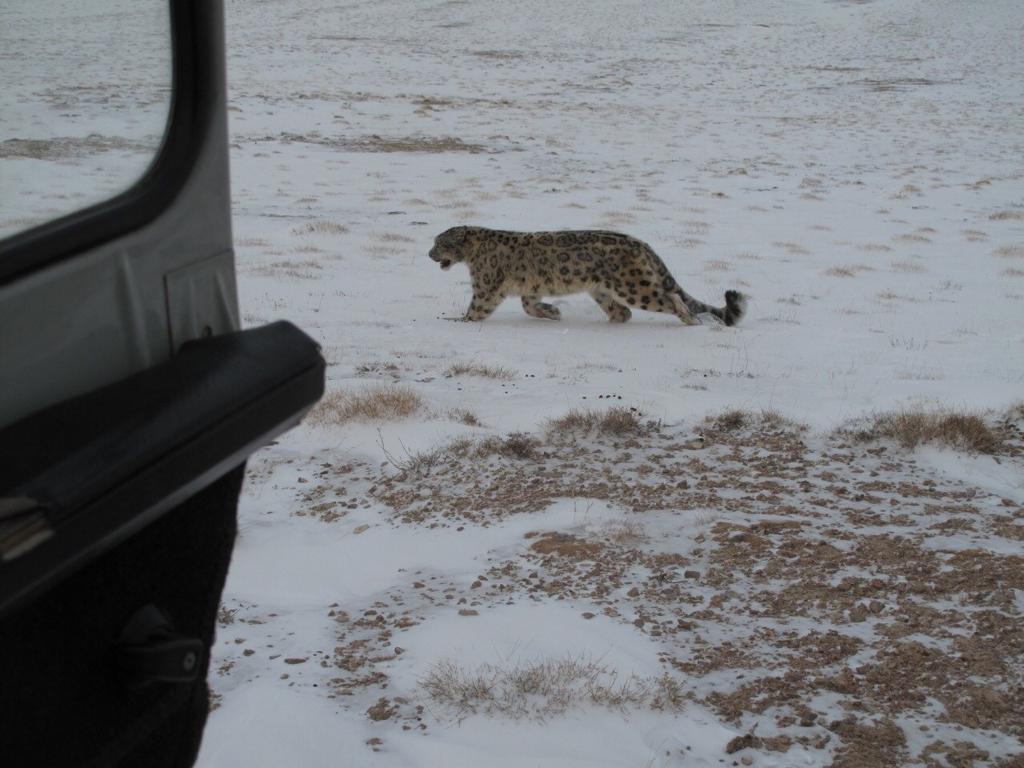One more snow leopard has been saved in the Gorno Badakhshan Autonomous Region (GBAO).
The snow leopard has been caught when it killed six sheep and goats of a resident of one of villages in GBAO’s Vanj district, known Tajik journalist Qurbon Alamshoyev wrote on page of the Pamir Mountains Tj group on Facebook.
The residents reportedly called the GBAO committee for environmental protection and specialists came and took the snow leopard to Khorog.
The snow leopard, which is currently being held in a cage at the Pamir Biological Institute, turned out to be a pretty old female of 12 or 13. “She was weak and sick and needed urgent veterinary care,” said Director of the Pamir Biological Institute, Abdulnazar Abdulnazarov. “She is currently being held in a cage at the Institute.”
Specialists say at least three months are needed for full rehabilitation of that snow leopard.
According to Alamshoyev, seven snow leopards, which were caught during attacks on domestic animals in various villages of Rushan, Roshtqala, Ishkashim and Vanj districts and in Khorog, the capital of GBAO, have been released over the past four months.
They have failed to save only the snow leopard that was torn to pieces by dogs in one of villages in the Roshtqala district.
Recall, a week-long photo exhibition, dubbed In the Footsteps of Snow Leopard, took place at Dushanbe’s art-café Mazza from October 23 to October 29. It was one of educational and cultural events dedicated to the International Snow Leopard Day, which is marked on October 23.
Hosted by the Aga Khan Agency for Habitat (AKAH), a conference entitled “Snow Leopard Conservation through Effective Habitat Management” took place in Dushanbe on October 29-31. The event reportedly brought together over fifty snow leopard experts, scientists, government and non-government organizations. Among the participants were the Committee for Environmental Protection of Tajikistan, Academy of Sciences of Tajikistan, Association of Hunters of Tajikistan, United Nations Development Program (UNDP), the Global Snow Leopard Ecosystem Protection (GSLEP), and other organizations specialized in the study and conservation of snow leopard in Tajikistan.
The conference was organized in close partnership with UNDP’s Global Environmental Facility (GEF) Project and enabled the participants to be provided with updates on organizations’ activities in the area of snow leopard protection and get involved in the development of action plan for the snow leopard conservation in Tajikistan.
Major topics included protection efforts, latest achievements and conservation initiatives of the snow leopard species by environmental organizations, conservationists, and related agencies. Participants conducted a series of discussions on snow leopard protection, including studies on the ways and methods of reducing human-wildlife conflict, methods of facilitating long-term conservation plans in snow leopard range countries and scientific research methods on protection and conservation of this valuable species and its habitat.
According to the World Wild Fund for Nature, there are about 4,000 snow leopards left in the world and the numbers are declining due to poaching, habitat loss and climate change.
In Tajikistan, the total habitat area for snow leopards is about 85,700 km, which represents 60% of the total territory of the country. According to local experts, Tajikistan now contains around 250-400 snow leopards primarily within the Pamir Mountain range.







